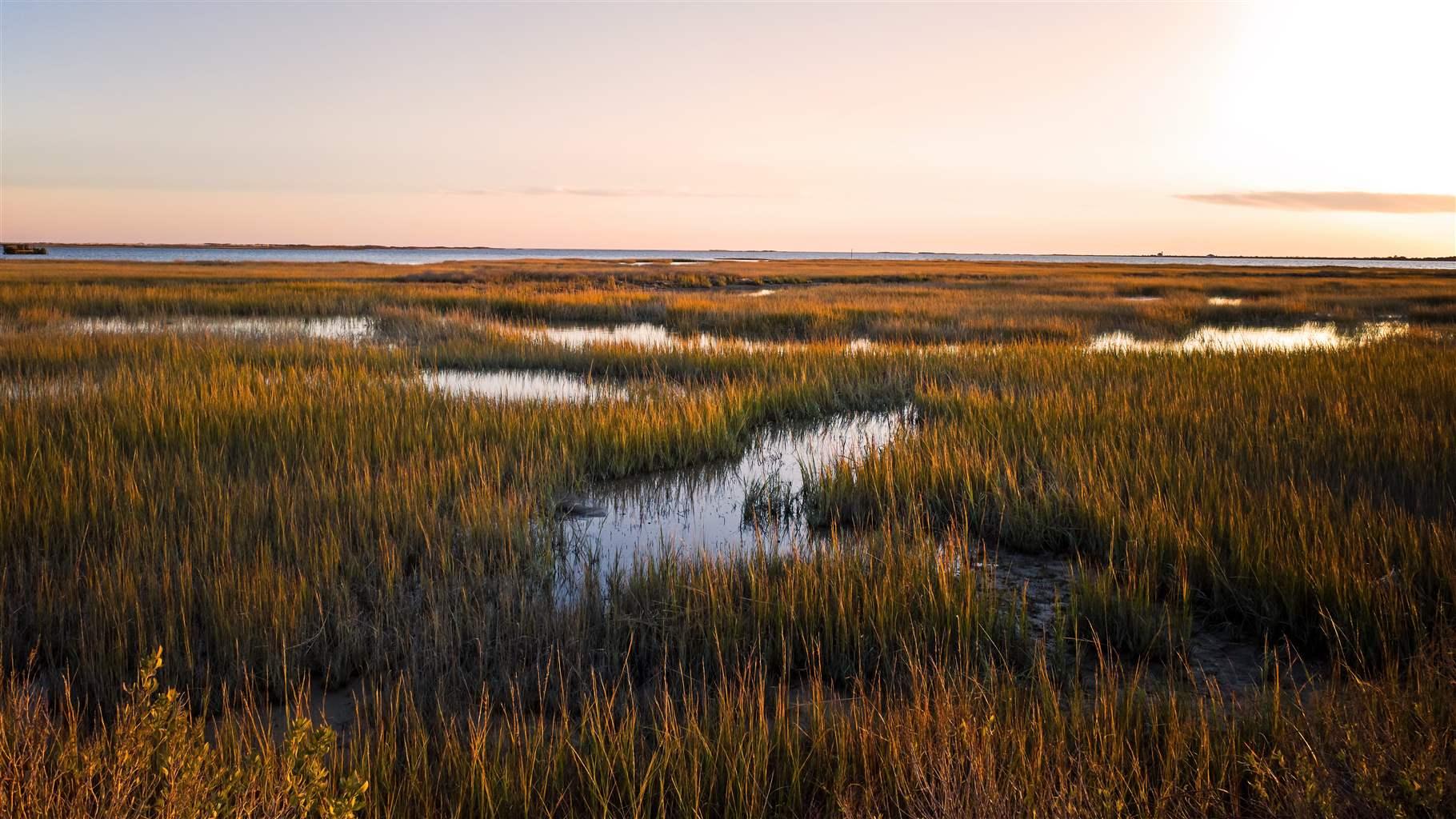As sea levels continue to rise along the Atlantic coast, Virginia is projected to experience almost 5 feet of increase by 2080, submerging an additional 649 square miles of land, according to state estimates.
To address this growing threat to shoreline communities, officials in Virginia will promote science-based, cross-jurisdictional collaboration to mitigate flooding and increase communities’ resilience, according to the state’s Coastal Resilience Master Planning Framework, which was released Oct. 22. The framework lays out guiding principles and objectives for the development of a coast-wide master plan to protect and sustain the diverse coastal communities in the Commonwealth. The plan’s ambitious goal is to identify priority projects for flood mitigation over the course of the next year, including those that use nature-based solutions—such as wetlands restoration, oyster reef creation, and coastal dune protection—to help absorb some of the impact of severe storms and encroaching tides.
Communities benefit from regional planning
One of the key principles of the framework is regional collaboration and priority-setting to address flooding, which can deliver broad benefits. For example, the Northern Virginia Regional Commission (NVRC), a council of local governments, created a work group to assess climate change impacts on infrastructure and the natural environment. By analyzing shared vulnerabilities across jurisdictions, NVRC was able to spot policy gaps and land-use decisions that left communities at increased risk of flooding and other extreme weather events. The analysis also helped decision-makers develop and prioritize a list of resilience projects, which can be implemented once funding is available.
The plan leverages the capacity of the planning district commissions in Virginia’s coastal region and builds on existing programs that protect the Chesapeake Bay and tidal wetlands. The use of regional approaches to identify critical assets, at-risk communities, and priority projects will allow state and local leaders to take advantage of shared data and economies of scale, resulting in more informed investments and impactful projects. This strategy can also help ensure that localities with limited capacity or funds for addressing flood risk are not left behind, while supporting the work of communities at the forefront of flood-risk mitigation.
Harnessing the value of nature
Another principle in the framework recognizes the role of protective natural systems, such as wetlands, dunes, and coastal forests, in reducing flood risk. Maintaining and enhancing coastal habitats is also important to the region’s economy—agriculture, fisheries, oyster farming, and the tourism industry all benefit from healthy habitat and ecosystems.
Research has shown that nature-based strategies, including establishing green spaces or creating living shorelines, stabilized with rock, sand, or vegetation capable of absorbing excess waters, can be more successful and cost-effective preventative measures than installing bulkheads and seawalls. Some Virginia coastal communities have already experienced success by replacing hard infrastructure with natural alternatives.
For example, in Norfolk, a deteriorating seawall for years failed to prevent frequent flooding in and around Myrtle Park. The city removed the seawall and restored wetlands, which now provide flood protection benefits, improve water quality, enhance wildlife habitat, and—along with a redesigned shoreline area—serve as a recreational space for the neighborhood.
The coastal resilience framework highlights the value of such efforts and the need to restore natural floodplains, including relocating flood-prone assets and structures. Removing frequently flooded structures and restoring natural conditions can create open spaces that can, in turn, absorb and dissipate excess water, thereby buffering neighboring properties from flooding. As state officials note in the document, developing a Strategic Coastal Relocation Handbook will help communities make informed decisions about returning these areas to nature.
Virginia lawmakers are already prioritizing nature-based approaches in programs such as the Community Flood Preparedness Fund, a new state loan and grant program for flood mitigation projects. Highlighting these strategies in the framework will further integrate the benefits they provide into the regular decision-making of coastal communities.
Turning the framework into a plan
State officials will now focus on creating a full Coastal Resilience Master Plan, as directed by Governor Ralph Northam (D) in Executive Order 24. To that end, the commonwealth will create a technical assistance committee composed of state agency representatives, scientists and engineers, and regional leaders.
One of the committee’s primary responsibilities will be to assess research needs and improve scientific understanding of flood risks throughout coastal Virginia. The committee will also identify specific mitigation projects and align funding sources, including resources available from the Community Flood Preparedness Fund. In addition, the committee will look to strengthen partnerships for mitigation projects with federal agencies, including the Department of Defense, which has multiple installations in the region.
The commonwealth will host a series of roundtable discussions in coastal communities to increase local involvement and hear from residents directly affected by sea-level rise and recurrent flooding. Virginia officials expect to create a robust, actionable plan by continuing to engage with experts, community members, and other stakeholders. Their efforts will help Virginia’s communities prepare for future floods and protect a vibrant coastal economy.
Yaron Miller is an officer and Sarah Edwards is a senior associate with The Pew Charitable Trusts’ flood-prepared communities initiative.
"strategy" - Google News
October 29, 2020 at 02:22AM
https://ift.tt/3oCvM6E
In Virginia, Sea-Level Rise and Flooding Prompt New Strategy - The Pew Charitable Trusts
"strategy" - Google News
https://ift.tt/2Ys7QbK
https://ift.tt/2zRd1Yo
Bagikan Berita Ini















0 Response to "In Virginia, Sea-Level Rise and Flooding Prompt New Strategy - The Pew Charitable Trusts"
Post a Comment